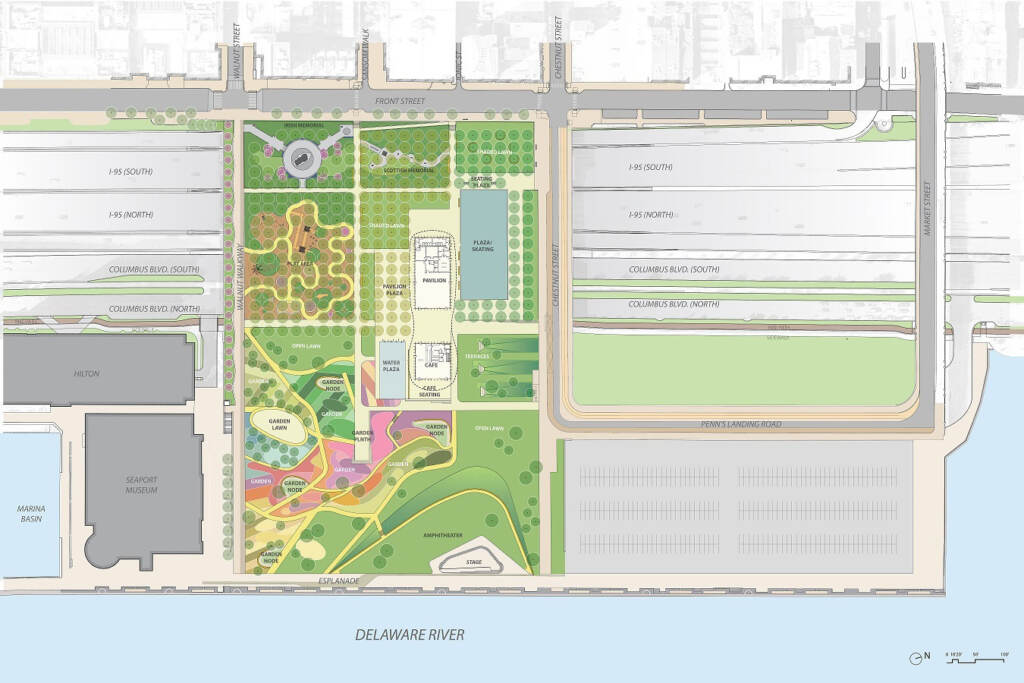Car-hating Inkster crank case has strange ideas for I-95
Ah, the Inquirer’s crank case is at it again, spewing and spinning her anti-auto paranoia into a myopic mess built on wishful thinking rather than on reality.

It’s like that with cranks, and Inkster Inga Saffron is at the head of the parade, this time inveighing against a necessary rebuild of I-95 between the Ben Franklin (womanizer) and Walt Whitman (gay guy) bridges.
[Personal disclosure: I successfully sued Saffron, and the Inquirer, for defamation. The jury found Saffron guilty of “outrageous conduct.” My criticism of her is always based on her work product, and her strange ideas.]
As an example of her willful blindness, she writes that “this particular stretch of I-95 . . . provides a useful link between Bucks County and the Philadelphia airport.”
What?
That is how she defines I-95, the primary artery between Miami and Maine? How parochial a prism must be in place to reduce I-95 to a link between New Hope and Tinicum Township?
She notes, correctly, when it was built it required bulldozing a path through South Philadelphia neighborhoods. Progress often brings pain. She notes, without substantiation, that it wouldn’t be built that way today, and she believes it should not be rebuilt where it is.
What would she replace it with?
No, not a bike lane — but that’s a good guess, because suffering Saffron loves bike lanes and hates cars, garages and parking lots as her work demonstrates.
Her bright idea?
What a simple-minded solution.
If only people wanted mass transit. Alas, they don’t. Ridership numbers prove it.
In the same edition that carried Saffron’s screed, the Inquirer had a story with the subheadline, “Without more state money, SEPTA and other public transit agencies must decide soon on service cuts.”
Saffron actually acknowledged that, but used it as a predictable attack on Republicans who hate raising taxes for almost any purpose.
Here’s the truth: SEPTA is in the crapper because ridership is down. And, relying on fares, Amtrak can’t support itself. The railroad is like some Millennial living in his parents’ basement.
Don’t get me wrong. I support mass transit. I grew up in New York City, with a superior mass transit (subway) system — that was clean, fast, affordable.
That was then. Not today.
Philly has the Broad Street and Market-Frankford lines, once good, today dirty and dangerous. Its buses run on sketchy and unreliable schedules.
I wish it were otherwise, I really do. But I doubt ridership here would increase very much even if it were free, an idea that is being experimented with in several cities.
A no-fare plan would mostly benefit low-income people, who are probably using mass transit already. Would free transit pry significant numbers of commuters out of their cars? I doubt it.
You know what would? Gas at $5 a gallon, but what bureaucrat would build a policy on that? I would be suicide.
Removing fares requires even more government financial support, which would mean higher taxes for someone, and I see little appeal for that.
I understand the argument for free transit. Why not classify transportation as a “free”city service, such as education, fire, police, sanitation?
The answer is this: There is no appetite for it now. It sounds too, well, socialistic, and that is the S-word for many Americans.
Rebuilding the parts of I-95 that need it can be done can be done sensibly, to improve on what was. An example is the rebuild of a stretch of I-95 running through Center City that will be depressed, and covered by a deck that will be turned into green space, eliminating what some saw as a barrier between the city and the Delaware River.
Great idea.
Instead of relying on realistic options, Saffron goes sailing into loosely related pie-in-the-sky notions, such as extending the Broad Street subway into the Navy Yard, and a subway spur up Roosevelt Boulevard.
On their own, not terrible ideas — except for the cost — but unrelated to the I-95 topic.
In her reporting, she says that car traffic has fallen in the region with the shift to work at home, but truck traffic has surged and the overall traffic is up. Truck traffic is probably the prime driver (no pun intended) of traffic. Saffron is silent on how “more transit” solves that problem.
Because it doesn’t.
She’d like SEPTA to increase service on the airport line, which runs twice an hour, but is otherwise a good option.
Except —
I have lived in Center City for 50 years, and have never used it.
Why? I would need a ride to get to it with my luggage. If I am already in a cab or Uber, why bother with the train and have to hassle with my luggage? Why use two forms of transit to get to the airport?
It’s just not realistic.
But that’s out-of-touch Saffron, who supports the findings of a doctoral student to support her fantasy beliefs.
In her summary, she lets him kvetch that PennDOT “has prioritized cars, not communities.” (The T in DOT stands for Transportation, not Housing.)
As Saffron often does, she treats cars as if they were a separate, nonhuman species on earth.
They are not. Inside each car is at least one human being, who belongs to a community.
And those people, whose gasoline taxes and tolls maintain the roads, have rights, too.
Unclogged roads move vehicles faster, and that reduces emissions. You don’t need a degree to understand that.



